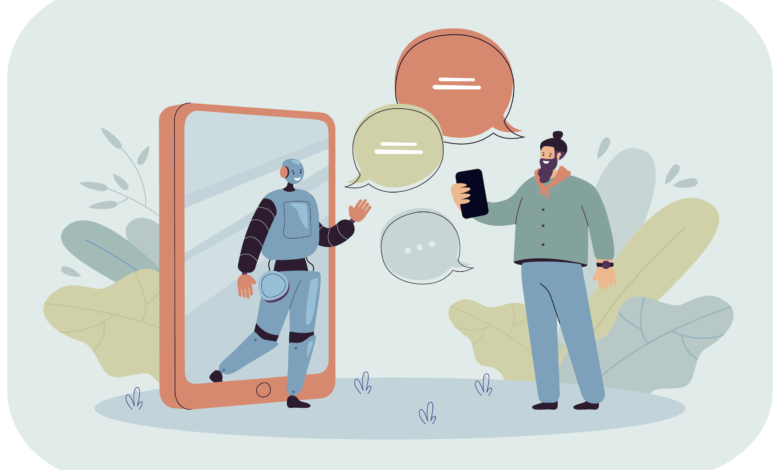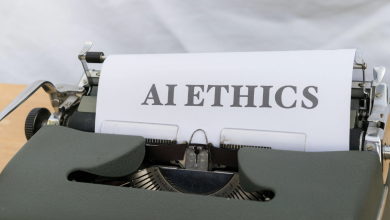
In today’s connected world, artificial intelligence (AI) is playing a growing role in our lives, across various domains including education, work, and daily interactions. As AI becomes more prevalent, we must ask: how can we ensure AI respects and understands the intricacies of different cultures?
The Problem with AI and Cultural Understanding
AI systems, particularly large language models, are trained on vast amounts of data scraped from the internet. This data includes not only factual information but also cultural biases, inappropriate content, and sometimes offensive language. When applied to language learning, these AI models risk perpetuating cultural insensitivities or misunderstandings, which can be particularly problematic in professional settings such as education or work.
For instance, an AI language tutor might use idioms or references that are perfectly acceptable in one culture but offensive in another. It might struggle with concepts like sarcasm or humour that vary widely across countries. In some cases, the AI might inadvertently broach topics that are taboo in certain cultures, creating uncomfortable or inappropriate learning situations for people.
The risks extend beyond mere misunderstandings. Cultural insensitivity can lead to reinforcing stereotypes, causing offense, or even sparking conflict among those from different backgrounds.
Strategies for Making AI Culturally Aware
Despite these challenges, several ways can be explored to make AI more culturally aware and sensitive:
- Use detailed prompts when interacting with AI – these prompts can include specific instructions about cultural contexts, appropriate topics, and language use. For example, a prompt might specify the user’s cultural background, language level, and any sensitive topics to avoid. This helps the AI adjust its responses to fit different cultural settings.
- Train AI models with carefully curated datasets that reflect cultural diversity and sensitivity – This process, while time-consuming and resource-intensive, can create AI systems that are more attuned to cultural nuances. It involves selecting and vetting training data to ensure it represents a wide range of cultural perspectives and is free from offensive or biased content.
- Use multiple AI agents, each with a specific role – for instance, one might focus on language instruction, while another specialises in cultural context and appropriateness. These agents work together to provide a more culturally sensitive experience. This allows for more careful handling of cultural issues.
Working with Experts
To ensure cultural accuracy and sensitivity, it’s important to involve cultural experts in the development and testing of AI systems. These experts can spot potential mistakes that might be missed by developers and guide AI to use appropriate language and topics for specific cultures.
Balancing Technology and Ethics
As we develop AI tools for specific purposes, we need to think simultaneously about what technology can do for the end user as well as what is right for them.
Protecting people, especially minors, from inappropriate or harmful content and conversations is paramount. This might involve implementing strict content fillers and age-appropriate conversation topics. Additionally, as AI systems collect and process data, ensuring the privacy and security of this information is crucial. AI developers must implement robust data protection measures to prevent breaches and unauthorised access to sensitive information.
Transparency
Being open about the capabilities and limitations of AI systems helps set realistic expectations and builds trust with users. Educating users about the nature of AI interactions and potential limitations in cultural understanding is vital. Giving users control over their learning experience, such as letting them choose certain settings or opt out of certain topics, can enhance their experience and respect their sensitivities.
Adapting AI for Different Contexts
Because cultural norms are different around the world, AI systems need to be customised for different regions or cultures. This means creating different versions of an AI system, each tailored to specific cultural contexts. The ability of AI to adapt in real-time to different cultural contexts is an area of ongoing research and development and there’s still much to be done.
Testing
Ensuring the cultural sensitivity of AI systems requires careful testing and ongoing monitoring. This includes having sector-specific experts test the system and attempting to identify potential issues or inappropriate responses. Beta testing with volunteers who are aware they’re testing an AI system can provide valuable feedback on real-world interactions.
It doesn’t stop there. Even after the AI system is being used, it’s important to keep watching how it performs. This can include automatic systems that flag potentially problematic interactions for human review. Implementing user feedback mechanisms, such as easy ways for users to report issues or rate their interactions, can help quickly identify and address problems.
While these strategies can significantly help, it’s important to be aware that AI has limits in truly understanding culture. Culture is complex, always changing, and deeply human. An AI, no matter how advanced, may never fully grasp the subtleties of cultural interaction in the way a human can.
This limitation doesn’t mean we should not use AI i. Instead, it suggests that AI should be seen as a powerful tool to augment human interactions, not replace them entirely
The Importance of Human Oversight
Because cultural sensitivity is so complex, human oversight remains very important in AI-driven interactions. This means regularly auditing AI responses and interactions to ensure they remain appropriate and sensitive. It also means continuously training and updating AI systems based on new cultural developments and feedback from users.
Having humans available to handle complex cultural discussions or sensitive topics is essential across various professions and contexts for example in education, customer service, and healthcare. These experts need to step in when AI reaches its limits in understanding or navigating cultural complexities. They can also provide a human touch that AI cannot replicate, offering empathy, personal experiences, and in-depth explanations of cultural practices and beliefs.
Addressing Potential Misuse
As with any powerful technology, there are concerns about the potential misuse of AI. One concern is the possibility of “jailbreaking” – attempts by users to manipulate the AI into producing inappropriate or offensive content. While this is primarily a security concern, it also affects cultural sensitivity.
To address this, developers must implement robust security measures and clear user guidelines. It’s important to educate users about the responsible use of AI and the potential consequences of misuse. Having clear policies and procedures for handling instances of misuse is key to maintaining a safe and respectful environment.
The Future of AI
As AI technology continues to evolve, we can expect it to better navigate cultural sensitivities, understand contexts and adapt to individual cultural backgrounds in real time. However, it’s important to approach these advancements thoughtfully, ensuring that AI enhances, rather than diminishes, the richness of human cultural exchange.
Integrating AI into our global society offers both exciting opportunities and challenges regarding cultural sensitivity. By combining AI with human expertise and ethical considerations, we can create environments that are not only efficient but also culturally respectful and inclusive.
The journey towards truly culturally sensitive AI is ongoing. It requires constant vigilance, adaptation, and a deep commitment to ethical practices. While AI may never perfectly understand culture like humans do, it has great potential to enhance and broaden cross-cultural experiences. By thoughtfully developing and using AI in various sectors – from business and education to healthcare and diplomacy – we can create tools that not only bridge language gaps but also promote global understanding and cultural empathy.
Collaboration between AI developers, language and cultural experts, and end-users will be critical in shaping a future where technology and cultural awareness work hand in hand. This ensures that AI serves as a tool for unity rather than division across diverse cultural landscapes.


